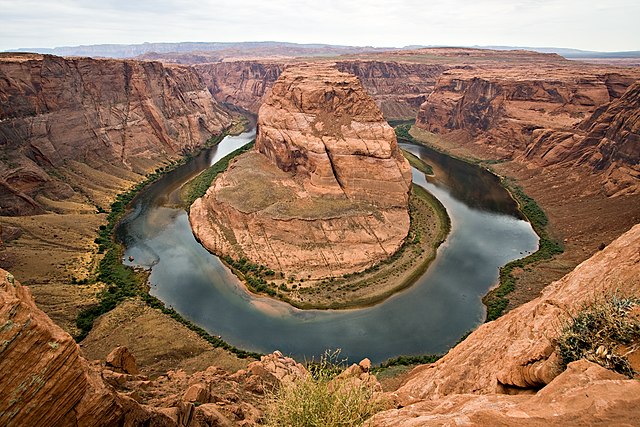Alfalfa farmers in California’s Imperial Valley could soon stop watering their thirsty fodder crop for 2 months and instead accept compensation to shore up a depleted Colorado River.
So far, growers are willing to receive $300 per acre-foot of irrigated area primarily because current oversupply of hay has killed prices. According to calculations, this kitty could offer more income than if farmers did not forgo irrigation.
The Imperial Irrigation District, whose residents use the bulk of the 2,334 km-long river, is providing the funding support.
According to Tina Shields of the district’s water management, the valley as a whole does not like to see its fields lie “fallow.” However, they have no choice but to follow commercial decisions.
Shoring Up Means More Water
But because August marks the height of summer when the river dries up, farmers are ready to toe the line.
Notably, consecutive summer droughts have made the river lose 20% of its levels since the year 2000.
One of the ways to recoup the water volume amid climate toll is to shore up the river, by improving its sources. One such measure took place in winter 2022-23, whose success prompted the U.S.Bureau of Reclamation to increase water allocations.
In August 2023, the bureau said that extra snow meltdown had increased water levels in Lake Mead which serves the Colorado River. This meant that the states that use the river for irrigation would get extra water than they did in 2023.
Restrictions in Seven States
As it stands now however, it seems like the hot summer of 2024 may prompt tightening of restrictions across seven states.
Arizona, for instance, had to lose 18% of its water usage in 2024 although it had lost more in 2023 at 21%.
California, Nevada, Colorado, New Mexico, Utah and Wyoming also have had to reduce their access in recent years.
Despite these restrictions, it appears like the conservation efforts in the southwest by President Biden’s Investing in America series have paid up. Still, some political voices think that Biden could have been more aggressive to improve supplies.
Ultimately, the decision to pay farmers to shut off the Colorado River could mean dry alfalfa fields and a saved river. And as the statistics below show, the river under the spotlight has tens of millions of people who depend on it.
Colorado River Agriculture Statistics
The Colorado River is a 1,450-mile (2,334 km)-long river that flows in a southwesterly direction in the western United States and northwest Mexico. Its source is the Rocky Mountains in Colorado at La Poudre Pass Lake. It supplies water to 40 million people, who include American Indian tribes. It waters some 2 million hectares (4,942108 acres) of farmland. This area mostly produces animal fodder and vegetables that feed many people in North America.
How important is the Colorado River in agriculture?
According to Save The Colorado organization, 78% of the river’s water or 4 trillion gallons, diverts to agriculture. The journal Nature in its part adds that 74% of the human-related uses of the river go into irrigation, while 52% to consumption.
How much water from the Colorado river diverts to alfalfa cultivation?
Alfalfa and other hay irrigation accounts for around 46% of the entire use of the river by human activity.
How much water does California use from the Colorado River?
Each state has an allocation of the total amount of water it can use from the strategic waterway. California uses 4.4 million acre-feet. Of this supply, 444,000 acre-feet or 10% of the total allocation goes to the Water District. Acre-feet, which equals 1,233 m3, is a unit measure of a large water volume on land in the United States.
